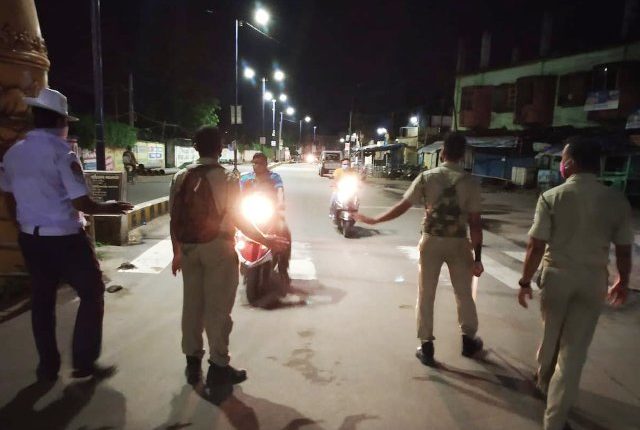MHA issues fresh COVID-19 Guidelines for States/ UTs effective from Dec 1
MHA issues fresh COVID-19 Guidelines for States/UTs
TNI Bureau: The Ministry of Home Affairs (MHA) issued fresh guidelines for COVID-19 surveillance which will be effective from December 1, 2020 and to remain in force upto31.12.2020.
The Centre asked the States and Union Territories to strictly enforce containment measures and to regulate the crowd.
The Government has also allowed the States to impose local restrictions, including night curfews inside the containment zones to prevent the spread of the coronavirus disease.
Local district, police and municipal authorities shall be responsible to ensure that the prescribed Containment measures are strictly followed.
Surveillance inside Containment Zones
States/ UTs to ensure careful demacationof Containment Zones by the district authorities, at the micro level, taking into consideration the guidelines prescribed by MoHFW in this regard. The list of Containment Zones will be notified on the websites by the respective District Collectors and by the States/ UTs. This list will also be shared with MoHFW.
Support Independent Journalism? Keep us live.
Within the demarcated Containment Zones, containment measures, as prescribed by MoHFW, shall be scrupulously followed, which includes:
- Only essential activities shall be allowed in the Containment Zones.
- There shall be strict perimeter control to ensure that there is no movement of people in or out of these zones, except for medical emergencies and for maintaining supply of essential goods and services.
- There shall be intensive house-to-house surveillance by surveillance teams formed for the purpose.
- Testing shall be carried out as per prescribed protocol.
- Listing of contacts shall be carried out in respect of all persons found positive, along with their tracking, identification, quarantine and follow up of contacts for 14 days (80 percent of contacts to be traced in 72 hours).
- Quick isolation of COVID-19 patients shall be ensured in treatment facilities/ home (subject to fulfilling the home isolation guidelines).
- Clinical interventions, as prescribed, shall be administered.
- Surveillance for ILI/ SARI cases shall be carried out in health facilities or outreach mobile units or through fever clinics in buffer zones.
- Awareness shall be created in communities on COVID-19 appropriate behaviour.
Local district, police and municipal authorities shall be responsible to ensure that the prescribed Containment measures are strictly followed and State/ UT Governments shall ensure the accountability of the officers concerned in this regard.
All activities have been permitted outside Containment Zones, except for the following, which have been permitted with certain restrictions:
i. International air travel of passengers, as permitted by MHA.
ii. Cinema halls and theatres, with upto 50 percent capacity.
iii. Swimming pools, only for training of sports persons.
iv. Exhibition halls, only for business to business (B2B) purposes.
v. Social/ religious/ sports/ entertainment/ educational/ cultural/ religious gatherings, with upto a maximum of 50 percent of the hall capacity, with a ceiling of 200 persons in closed spaces; and keeping of the size of the ground/ space in view, in open spaces.
Local restrictions
• States and UTs, based on their assessment of the situation, may impose local restrictions, with a view to contain the spread of COVID-19 such as night curfew. However, State/ UT Governments shall not impose any local lockdown (State/ District/ sub-division/City level), outside the containment zones, without prior consultation with the Central Government.
• States and UTs also need to enforce social distancing in offices. In cities, where the weekly Case Positivity Rate is in more than 10 percent, States and UTs concerned shall consider implementing staggered office timings and other suitable measures, with a view to reduce the number of employees attending office at the same time, thereby ensuring social distancing.
• No restriction on Inter-State and intra-State movement
• Protection for vulnerable persons
• Use of Aarogya Setu


Comments are closed.